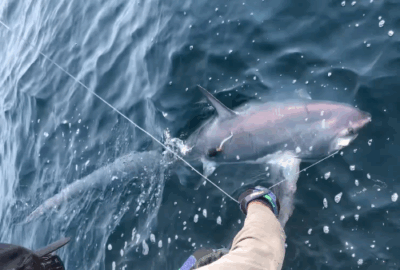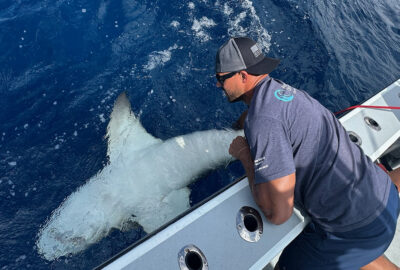Extralimital sightings of a gray whale in the western North Atlantic
By Orfhlaith O’Brien, Katherine Laemmle, Katharine A. Jackson, Katherine R. McKenna, Sharon Hsu, Jessica V. Redfern
Originally published in Endangered Species Research in July 2025

Abstract
Gray whales Eschrichtius robustus are High Arctic migrants that primarily inhabit the North Pacific Ocean. Gray whales have been extirpated from the North Atlantic Ocean since at least the middle of the 18th century. However, in the past 15 yr, there have been at least 4 gray whales sighted in the Atlantic Ocean or Mediterranean Sea. These sightings have been attributed to declining sea ice in the Arctic Ocean, which has created a navigable path from the North Pacific to the North Atlantic. The first 3 vagrant gray whales were first sighted in boreal spring, on the eastern side of the Atlantic, and were not in good health. We report on a fourth gray whale sighted twice in the western North Atlantic at the beginning and end of boreal winter: first on 19 December 2023 in the southeastern USA (off Florida), and second on 1 March 2024 in the northeastern USA (off Massachusetts). These sightings occurred outside of the geographic and temporal pattern of previous vagrant gray whale sightings. The whale appeared to be in fair condition and may have been feeding during the second sighting. This sighting adds to a growing list of recent sightings in the Atlantic and Mediterranean and demonstrates that gray whales may be able to survive in the western North Atlantic for at least short periods of time. Gray whales represent an important ecosystem sentinel: future Atlantic sightings remain possible if there continue to be navigable channels in the Arctic.
Full Text








